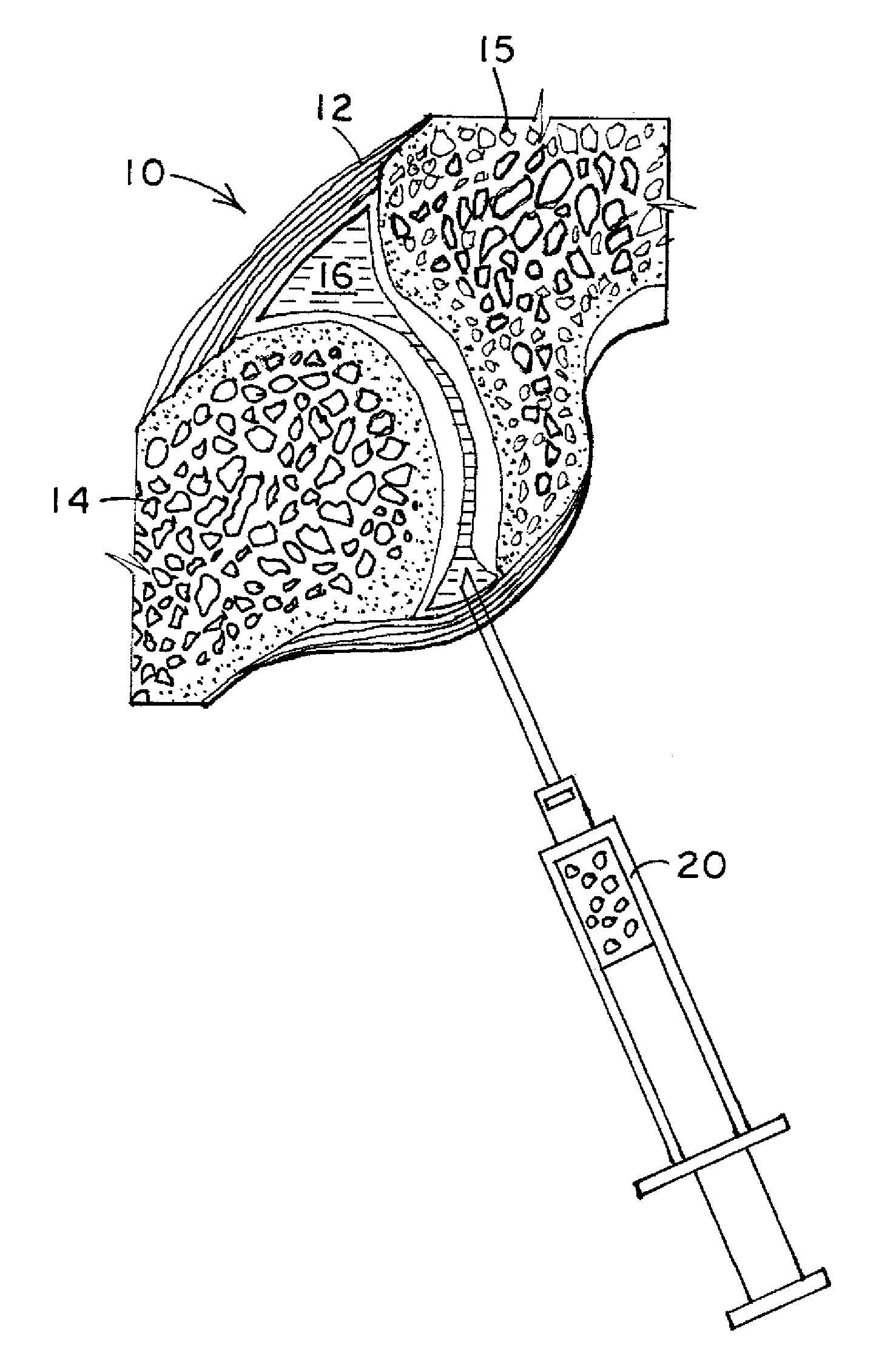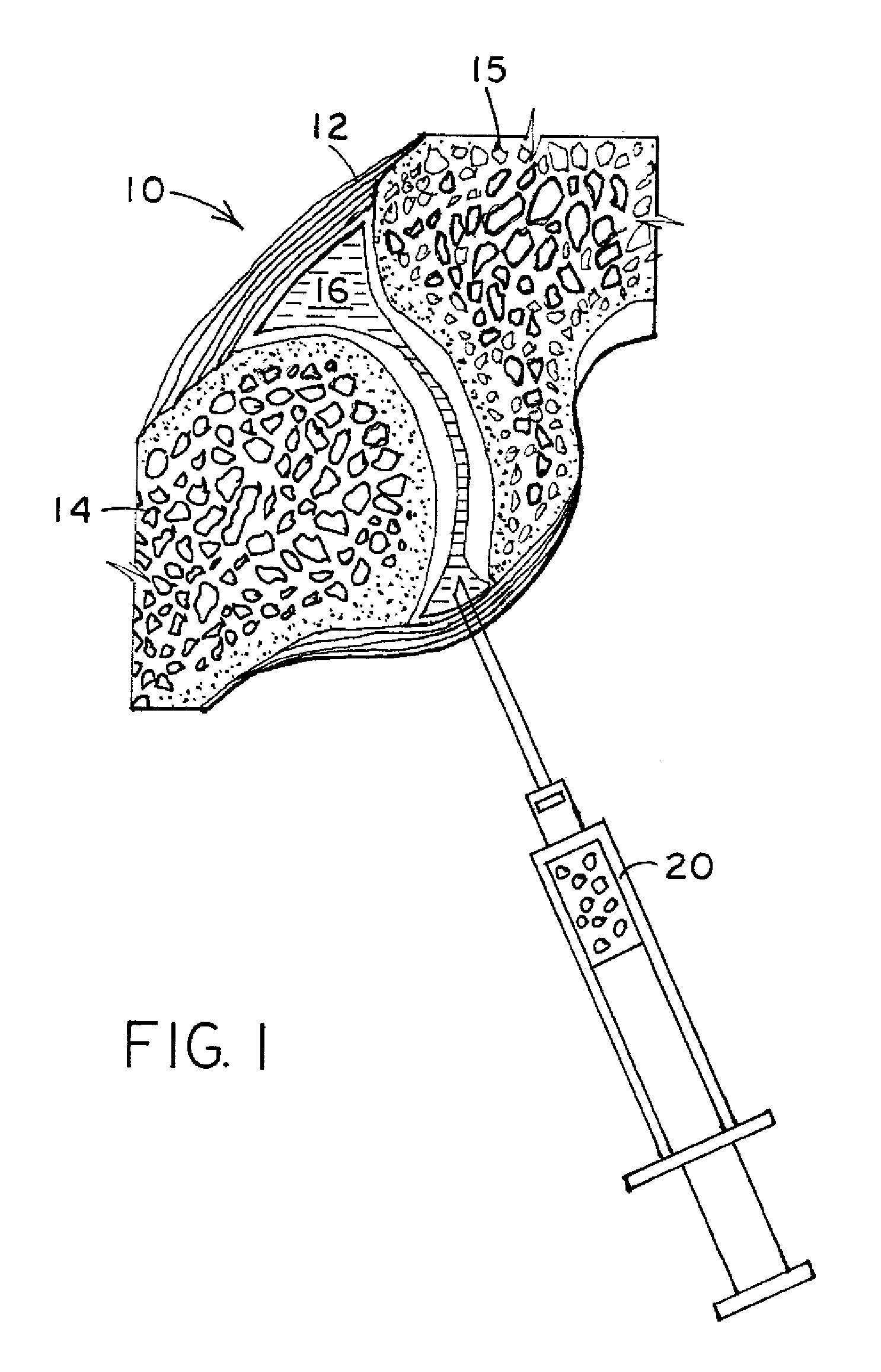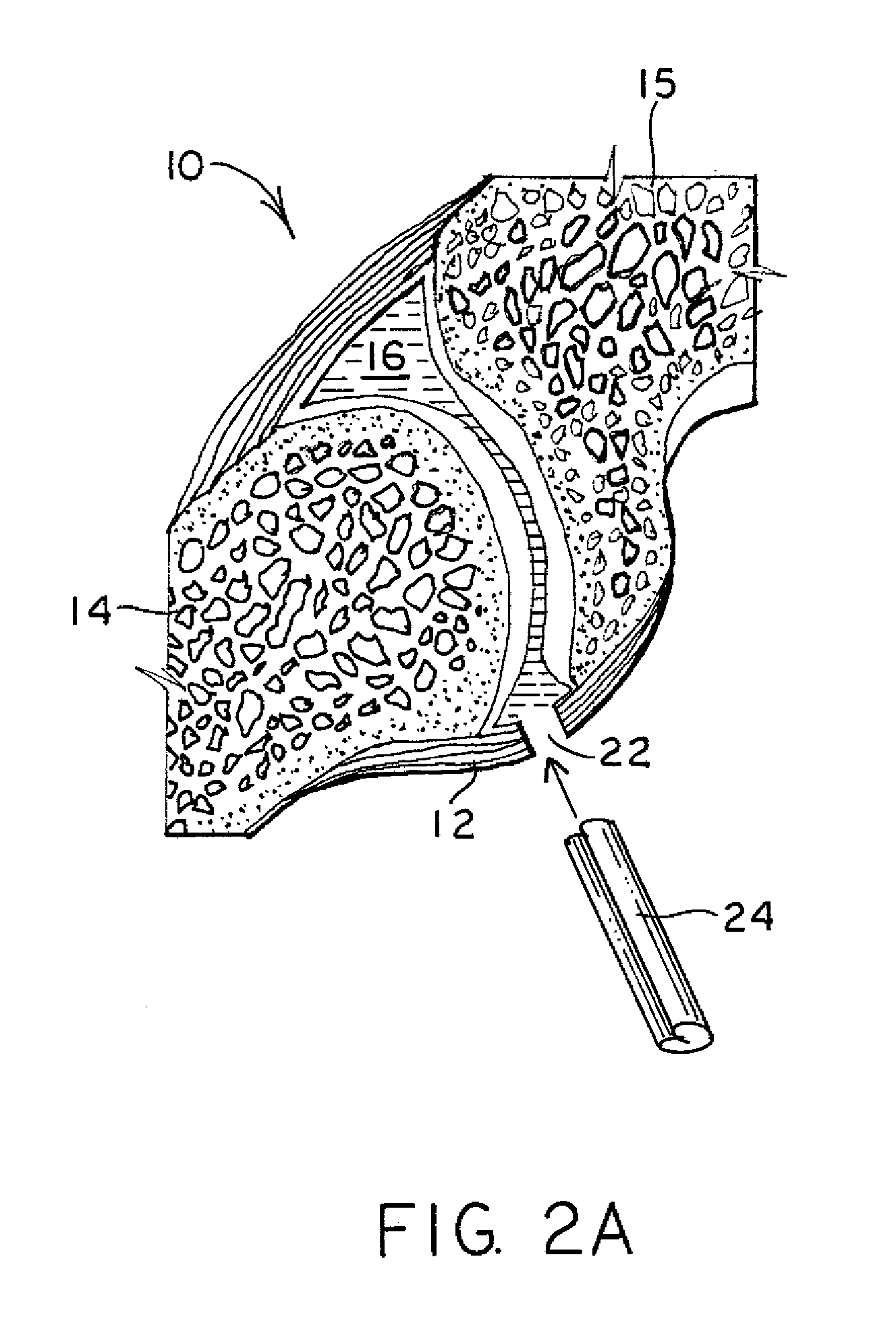Facet joint implant and procedure
a facet joint and implant technology, applied in the field of facet joint implants, can solve the problems of reducing the separation of opposing facet joints, affecting the biomechanics of those joints, and often painful faces of facet joints, so as to improve lubrication, reduce pain, and reduce the effect of elastic materials
- Summary
- Abstract
- Description
- Claims
- Application Information
AI Technical Summary
Benefits of technology
Problems solved by technology
Method used
Image
Examples
Embodiment Construction
[0018]FIG. 1 illustrates a cross-section of a facet joint 10. The facet joint 10 includes the joint capsule 12 that attaches to the bone 14, 15 of an upper and lower vertebra. The joint capsule 12 and bones 14, 15 together define an inner cavity 16 that normally holds synovial fluid. Thus, the joint capsule 12 surrounds the inner cavity on the perimeter, and the bones 14, 15 define the upper and lower ends of the inner cavity 16. The synovial fluid provides lubrication for the facet joint. If the facet joint degenerates, there can be a lessoning of synovial fluid, reduction in space between the bones 14, 15 such that painful bone-on-bone contact occurs. The present invention provides a synthetic elastic material of appropriate shape and size to be placed in the cavity 16 so that bone-on-bone contact is reduced or eliminated, thereby reducing or eliminating pain for a patient. The implant may also provide lubrication for the facet joint.
[0019] After it is determined that a facet joi...
PUM
| Property | Measurement | Unit |
|---|---|---|
| area | aaaaa | aaaaa |
| thickness | aaaaa | aaaaa |
| thickness | aaaaa | aaaaa |
Abstract
Description
Claims
Application Information
 Login to View More
Login to View More - R&D
- Intellectual Property
- Life Sciences
- Materials
- Tech Scout
- Unparalleled Data Quality
- Higher Quality Content
- 60% Fewer Hallucinations
Browse by: Latest US Patents, China's latest patents, Technical Efficacy Thesaurus, Application Domain, Technology Topic, Popular Technical Reports.
© 2025 PatSnap. All rights reserved.Legal|Privacy policy|Modern Slavery Act Transparency Statement|Sitemap|About US| Contact US: help@patsnap.com



